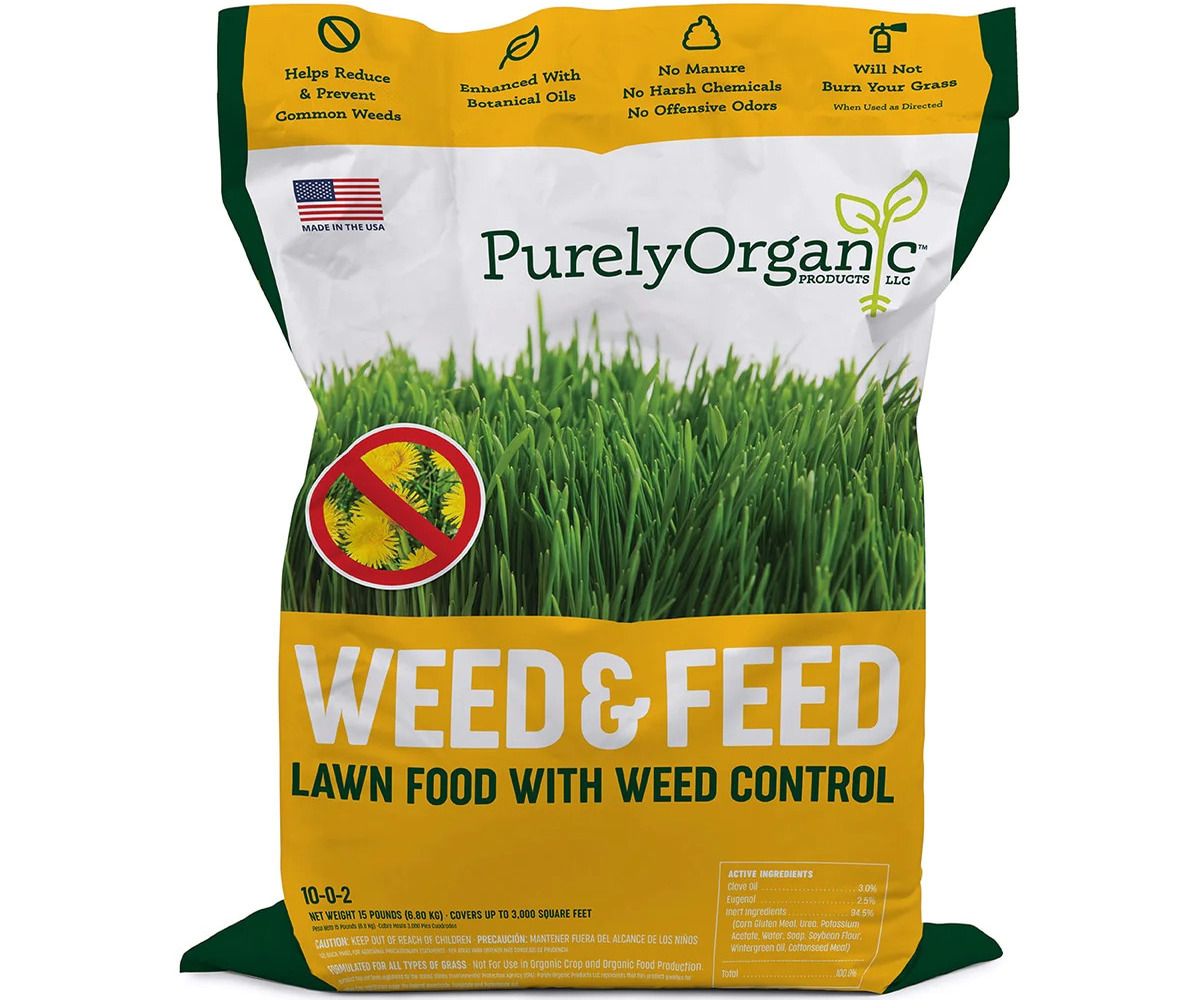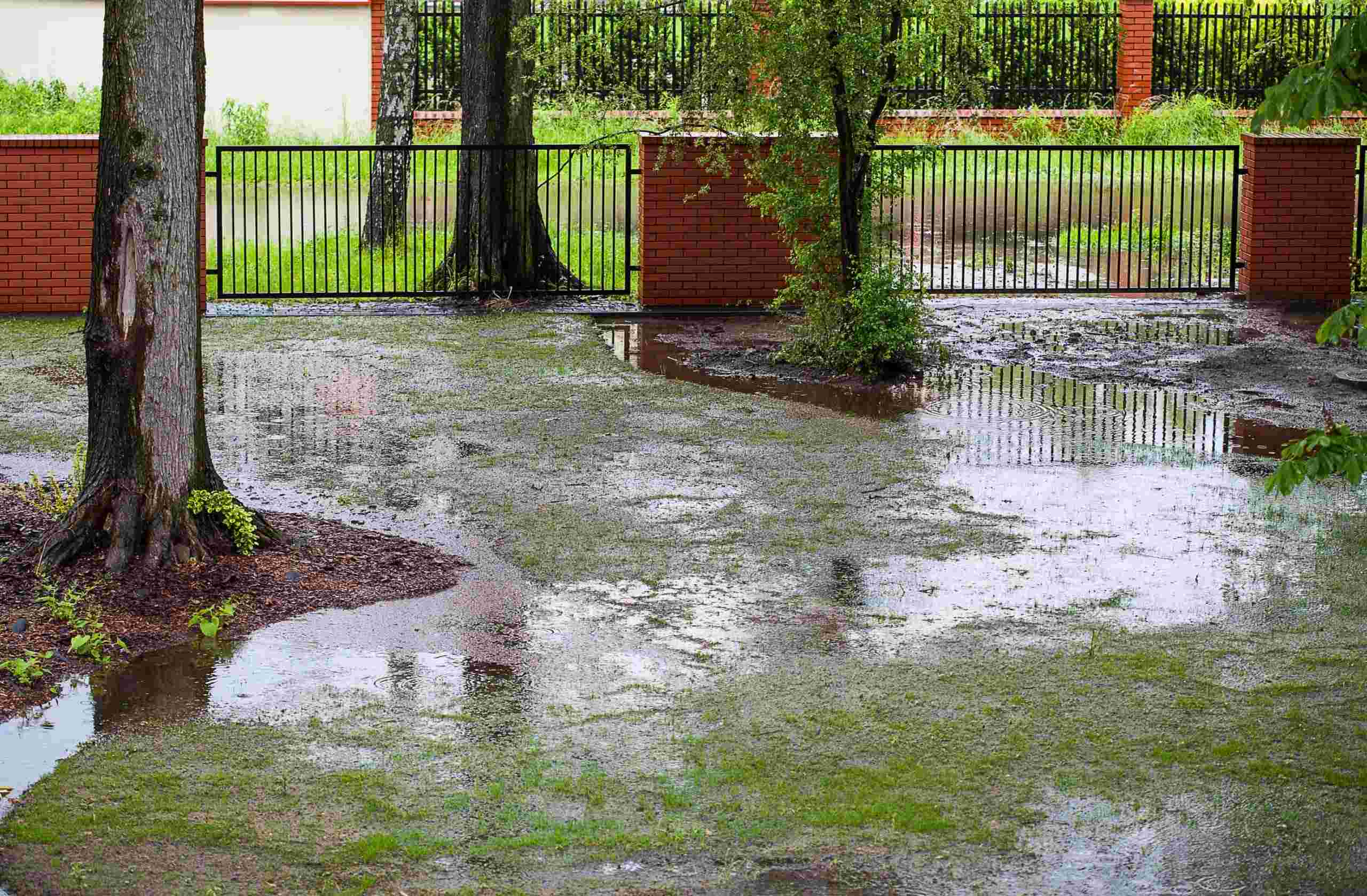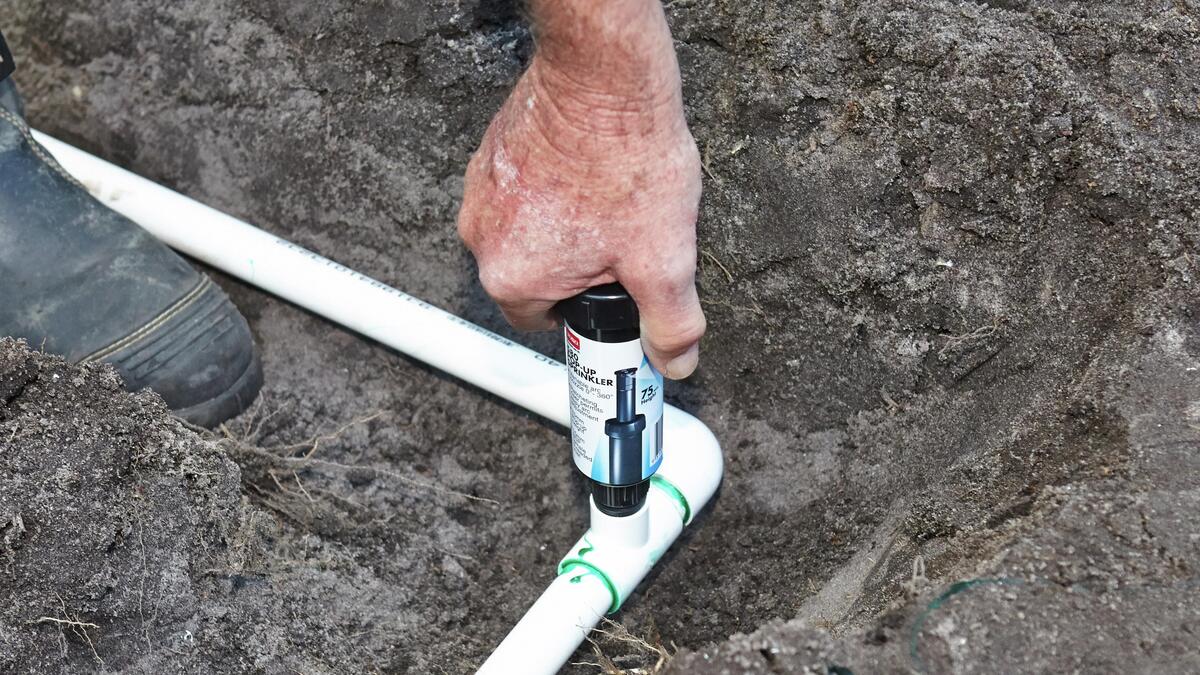Home>Gardening Tips and Tricks>Problem Solving>How To Fix A Lawn Full Of Weeds


Problem Solving
How To Fix A Lawn Full Of Weeds
Modified: January 22, 2024
Learn effective problem-solving techniques to fix a lawn full of weeds. Discover expert tips and solutions for a lush, weed-free lawn.
(Many of the links in this article redirect to a specific reviewed product. Your purchase of these products through affiliate links helps to generate commission for Chicagolandgardening.com, at no extra cost. Learn more)
Table of Contents
**
Introduction
**
Creating a lush, green lawn is a homeowner's dream, but the presence of unsightly weeds can quickly turn that dream into a nightmare. Weeds not only detract from the visual appeal of a lawn but also compete with grass for water, nutrients, and sunlight, ultimately compromising its health and vigor. However, with the right approach and a bit of know-how, it is possible to reclaim your lawn from the clutches of these pesky intruders.
Weed control is a multifaceted endeavor that involves understanding the types of weeds present, identifying the underlying causes of their proliferation, and implementing effective removal and prevention strategies. This comprehensive guide will walk you through the various facets of weed management, equipping you with the knowledge and techniques needed to restore your lawn to its former glory.
Whether you're dealing with dandelions, crabgrass, clover, or any other common weed variety, this article will provide practical insights into combating these adversaries. From manual removal methods to chemical and natural control alternatives, each approach will be explored in detail to help you make informed decisions based on your specific lawn care needs.
By the end of this guide, you will be empowered to take proactive measures to address weed infestations, bolster the health of your lawn, and maintain its pristine condition for years to come. Let's embark on this journey to transform your weed-ridden lawn into a verdant oasis that you can be proud of.
Identifying the Types of Weeds
Before embarking on a weed control regimen, it is crucial to familiarize yourself with the various types of weeds that may be infiltrating your lawn. Weeds can be broadly categorized into three main groups: broadleaf weeds, grassy weeds, and sedges. Each type exhibits distinct characteristics and growth patterns, necessitating tailored eradication methods.
Broadleaf Weeds:
Recognizable by their broad, flat leaves and often vibrant flowers, broadleaf weeds include dandelions, clover, chickweed, and plantain. These intruders tend to stand out amidst the uniformity of grass lawns, making them relatively easy to identify. Their extensive root systems and rapid spread pose significant challenges to lawn health, warranting prompt intervention.
Grassy Weeds:
Grassy weeds, such as crabgrass, annual bluegrass, and foxtail, closely resemble desirable turf grasses, making them particularly insidious. Their ability to quickly overrun lawns and outcompete grass for essential resources underscores the importance of early detection and targeted control measures.
Sedges:
Sedges are characterized by their triangular stems and grass-like appearance, often thriving in moist or waterlogged soil. Nutsedge, in particular, is a common sedge variety that can rapidly colonize lawns, posing a persistent challenge to eradication.
By familiarizing yourself with the distinguishing features of these weed categories, you can effectively pinpoint the invaders plaguing your lawn. This targeted approach enables the implementation of precise control strategies, optimizing the efficacy of your weed management efforts.
Understanding the Causes of Weed Infestation
Weed infestations are often symptomatic of underlying issues within the lawn environment. By delving into the root causes of weed proliferation, homeowners can address these factors to create an inhospitable environment for invasive plants, fostering a healthier and more resilient lawn.
Inadequate Lawn Maintenance:
Neglected or poorly maintained lawns are particularly susceptible to weed encroachment. Sparse grass coverage, uneven mowing, and infrequent watering can create openings for weeds to take hold and proliferate. Establishing a consistent lawn care routine, including regular mowing, proper watering, and overseeding, can fortify the turf against weed infiltration.
Soil Compaction and Imbalance:
Compacted soil and nutrient imbalances can compromise the health of grass, rendering it more susceptible to weed competition. Addressing soil compaction through aeration and amending nutrient deficiencies with targeted fertilization can bolster the vigor of the turf, diminishing the opportunities for weeds to establish a foothold.
Inadequate Nutrient Levels:
Imbalanced or deficient nutrient levels in the soil can impede the robust growth of grass, creating an environment conducive to weed dominance. Conducting a soil test to assess nutrient levels and pH can inform targeted fertilization strategies, rectifying deficiencies and promoting the health of the turf.
Poor Watering Practices:
Inconsistent or excessive watering can compromise the resilience of grass, while promoting the proliferation of moisture-loving weeds. Adopting a proper watering schedule and techniques, such as deep, infrequent watering, can optimize the health of the lawn while inhibiting weed growth.
By addressing these underlying factors, homeowners can mitigate the conditions that facilitate weed infestation, fostering a robust and vibrant lawn that is naturally resistant to invasive plants. This proactive approach to lawn care sets the stage for effective weed control and long-term maintenance.
Manual Weed Removal Techniques
Manual weed removal is a fundamental and environmentally friendly approach to curbing weed infestations, allowing for targeted eradication without the use of chemical herbicides. By employing various hand tools and techniques, homeowners can effectively eliminate weeds while minimizing disruption to the surrounding turf.
Hand Pulling:
For isolated weeds or patches, hand pulling remains one of the simplest and most effective methods. Grasping the weed at its base, ideally after rainfall or irrigation when the soil is moist, and gently pulling upward can dislodge the entire plant, including its roots. It is essential to ensure that the entire root system is removed to prevent regrowth.
Weeding Tools:
A range of specialized weeding tools, such as dandelion diggers, weed pullers, and hoes, are designed to facilitate the extraction of weeds with minimal disturbance to the surrounding turf. These tools enable targeted removal, especially in areas where hand pulling may be impractical or labor-intensive.
Weeding by Cultivation:
Cultivating the soil around weeds with a handheld cultivator or hoe can disrupt their root systems and expose them to desiccation. This method is particularly effective for annual weeds and can be integrated into regular gardening activities to prevent weed establishment.
Preventing Seed Formation:
Regularly inspecting the lawn for flowering weeds and promptly removing their seed heads can prevent the dispersal of seeds, curbing the spread of future weed generations. This proactive measure disrupts the weed life cycle, reducing the reservoir of seeds in the soil.
By incorporating manual weed removal techniques into a comprehensive lawn care regimen, homeowners can effectively manage weed populations while minimizing the reliance on chemical interventions. This hands-on approach not only contributes to a healthier lawn but also fosters a deeper connection to the outdoor environment, allowing for a more intimate understanding of the intricacies of weed control.
Chemical Weed Control Methods
Chemical weed control, employing herbicides to target and eradicate weeds, offers an effective and expedient means of managing widespread infestations. When applied judiciously and in accordance with product instructions, herbicides can significantly reduce weed populations, restoring the health and aesthetics of the lawn.
Selective Herbicides:
Selective herbicides are formulated to target specific types of weeds while sparing desirable turf grasses. These products are tailored to address broadleaf weeds, grassy weeds, or sedges, allowing for precise and targeted control without harming the surrounding grass.
Non-Selective Herbicides:
Non-selective herbicides, such as glyphosate, are designed to eradicate a broad spectrum of plants and are particularly effective for clearing large areas of persistent weeds. Care must be taken when using non-selective herbicides to avoid contact with desirable vegetation, as they can cause widespread damage if applied indiscriminately.
Pre-Emergent Herbicides:
Pre-emergent herbicides form a barrier in the soil, preventing weed seeds from germinating and establishing roots. These products are particularly effective for controlling annual weeds and can be applied proactively to inhibit weed growth before it becomes established.
Post-Emergent Herbicides:
Post-emergent herbicides are designed to target existing weeds, either selectively or non-selectively. These products are applied directly to the foliage of weeds and are effective for controlling mature plants that have already emerged from the soil.
When utilizing chemical weed control methods, it is imperative to adhere to safety guidelines, including wearing protective gear and applying herbicides in optimal weather conditions to minimize drift and maximize efficacy. Additionally, selecting the appropriate herbicide for the target weed species and growth stage is crucial for achieving desired outcomes while minimizing environmental impact.
By integrating chemical weed control methods into a comprehensive lawn care strategy, homeowners can effectively combat persistent weed infestations, restoring the vitality and visual appeal of their lawns. When used responsibly and in conjunction with other weed management practices, chemical interventions can play a valuable role in achieving long-term weed control and lawn health.
Natural Weed Control Alternatives
For homeowners seeking eco-friendly and natural approaches to weed management, a range of alternatives to chemical herbicides are available. These methods harness the power of natural elements and strategic practices to suppress weed growth while promoting the health of the lawn and surrounding ecosystem.
Mulching:
Utilizing organic mulch, such as wood chips, straw, or compost, can effectively inhibit weed germination and establishment by blocking sunlight and impeding the growth of weed seedlings. Mulching also contributes to soil moisture retention and nutrient enrichment, fostering a conducive environment for the growth of desirable plants.
Vinegar Solutions:
Acetic acid-based solutions, commonly derived from household vinegar, can serve as a natural and non-toxic weed control method. When applied directly to weed foliage, vinegar solutions can desiccate and kill the plants, providing a targeted and environmentally conscious approach to weed management.
Boiling Water:
Pouring boiling water over weeds growing in pavement cracks or isolated areas can effectively eliminate them without the use of chemicals. This method is particularly suitable for areas where vegetation management is desired without disturbing the surrounding soil or risking chemical runoff.
Manual Cultivation:
Regularly cultivating the soil with hand tools, such as hoes or cultivators, can disrupt weed growth and root systems, providing a natural and physical means of weed control. This practice is especially effective for preventing the establishment of annual weeds and reducing their seed bank in the soil.
Biological Controls:
Introducing natural predators or competitive plant species that inhibit weed growth can serve as a sustainable and long-term weed control strategy. For example, planting dense ground covers or introducing beneficial insects can outcompete weeds and suppress their proliferation.
By embracing natural weed control alternatives, homeowners can foster a harmonious and sustainable lawn environment while effectively managing weed populations. These methods not only minimize the reliance on synthetic chemicals but also contribute to the overall health and biodiversity of the landscape, aligning with environmentally conscious lawn care practices.
Maintaining a Weed-Free Lawn
Establishing and sustaining a weed-free lawn requires a proactive and integrated approach that encompasses regular maintenance, targeted interventions, and a commitment to fostering a healthy and resilient turf. By implementing the following practices, homeowners can effectively mitigate weed infestations and preserve the pristine appearance of their lawns.
Consistent Mowing:
Maintaining an optimal mowing height for the specific grass species in the lawn can promote dense turf growth, shading the soil and inhibiting weed establishment. Regular mowing also prevents the development of seed heads in weeds, curbing their spread.
Adequate Watering:
Adhering to a consistent and deep watering schedule can bolster the vigor of the grass while creating an inhospitable environment for many weed species. Deep, infrequent watering encourages deep root growth in the turf, enhancing its resilience against weed competition.
Fertilization:
Applying targeted fertilization based on soil test results can optimize the nutrient balance in the lawn, promoting robust grass growth while minimizing opportunities for weed encroachment. Balanced fertilization supports the health of the turf, reducing its susceptibility to weed infestations.
Overseeding:
Regular overseeding can fill in sparse areas of the lawn, crowding out weeds and promoting a dense and uniform turf. Selecting high-quality grass seed that is well-suited to the local climate and soil conditions can fortify the lawn against weed intrusion.
Weed Monitoring:
Regularly inspecting the lawn for early signs of weed growth and promptly addressing isolated weeds can prevent the establishment of widespread infestations. Vigilance and proactive intervention are key to maintaining a weed-free lawn.
Integrated Weed Management:
Integrating a combination of manual, cultural, natural, and, where necessary, chemical weed control methods into a cohesive lawn care strategy can effectively manage weed populations while promoting the overall health of the turf. This holistic approach addresses weed infestations from multiple angles, minimizing reliance on any single control method.
By adhering to these practices and maintaining a proactive stance against weed encroachment, homeowners can enjoy a lush, vibrant, and weed-free lawn. Consistency and diligence in lawn care efforts contribute to the long-term resilience of the turf, fostering an environment where desirable grasses thrive while weeds are kept at bay.
Conclusion
Transforming a weed-ridden lawn into a verdant oasis demands a multifaceted and dedicated approach to weed management. By identifying the types of weeds present, understanding the root causes of infestation, and implementing a combination of manual, chemical, and natural control methods, homeowners can reclaim the health and visual appeal of their lawns.
From the targeted removal of broadleaf weeds to the strategic use of selective herbicides and natural alternatives, each facet of weed control plays a pivotal role in restoring and maintaining a weed-free lawn. By integrating these practices into a cohesive lawn care regimen, homeowners can cultivate a resilient and aesthetically pleasing turf that is naturally resistant to weed incursions.
Consistent maintenance, including proper mowing, watering, fertilization, and overseeding, further fortifies the lawn against weed competition, fostering an environment where lush grasses flourish while weeds are suppressed. This integrated approach to weed management not only enhances the visual appeal of the lawn but also contributes to the overall health and sustainability of the landscape.
By embracing the principles and techniques outlined in this guide, homeowners can embark on a journey to nurture a thriving and weed-free lawn, elevating the outdoor living space and creating a welcoming environment for leisure and recreation. With a commitment to proactive weed management and a nuanced understanding of effective control methods, the vision of a lush and pristine lawn can be transformed into a reality.






